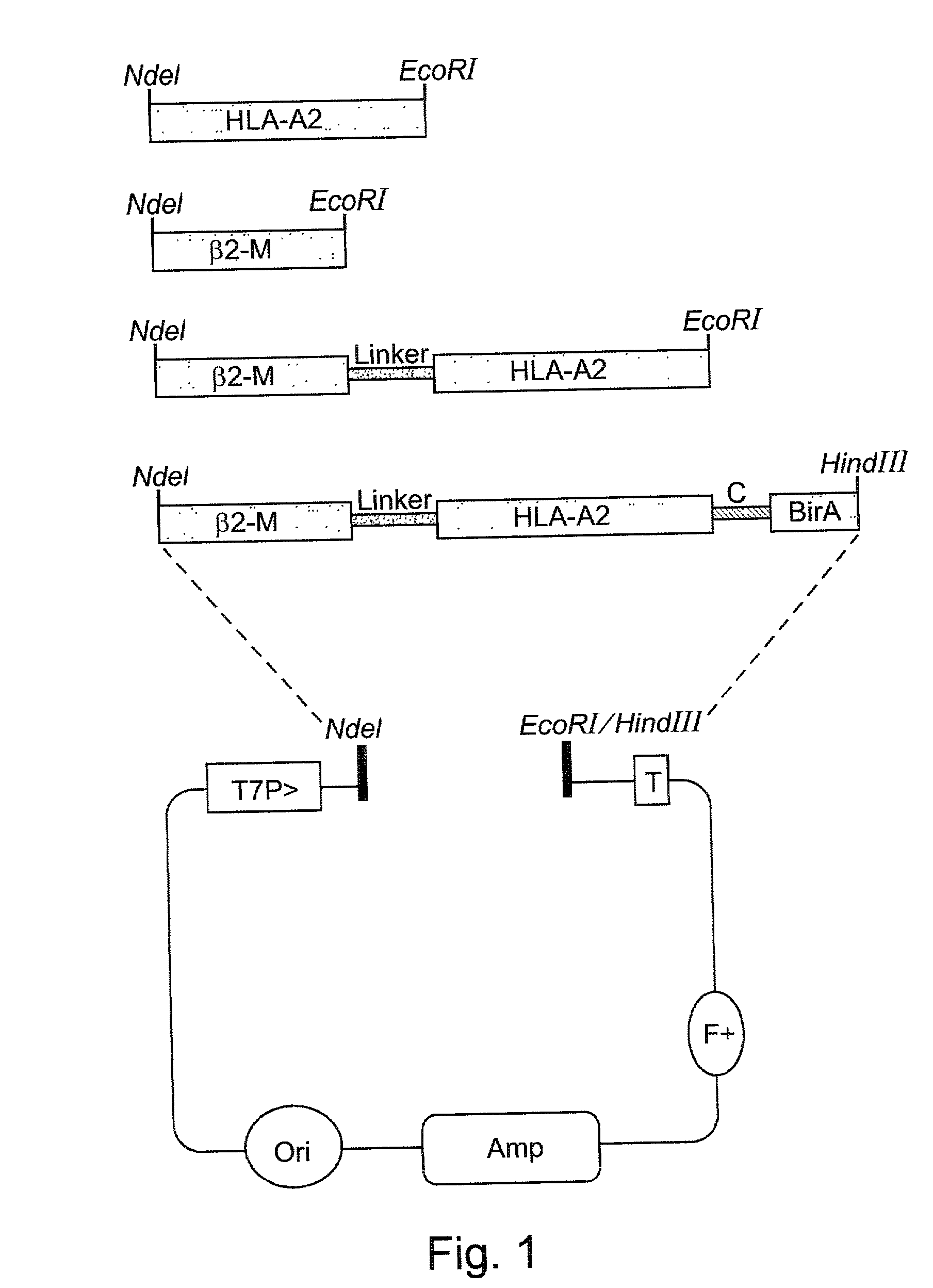Single chain class I major histo-compatibility complexes, constructs encoding same and methods of generating same
a histocompatibility complex and single-chain technology, applied in the field of single-chain class i major histocompatibility complexes, constructs encoding same and methods of generating same, can solve the problems of limited production yield of single-chain mhc-peptide complexes, limited production yield of these single-chain mhc-peptide complexes, and limited production efficiency of recombinant mhc-peptide complexes
- Summary
- Abstract
- Description
- Claims
- Application Information
AI Technical Summary
Benefits of technology
Problems solved by technology
Method used
Image
Examples
example 1
[0120] Materials and Methods
[0121] Peptides:
[0122] Cancer cell associated peptides G9-209-2M (IMDQVPFSV SEQ ID NO: 1) and G9-280-9V (YLEPGPVTV SEQ ID NO: 2), both derived from the melanoma antigen gp100 [24-26] were used for MHC binding. These peptides are modified at the MHC anchor positions 2 (in G9-209-2M) and 9 (in G9-280-9V) to improve the binding affinity to HLA-A2 [26]. The TAX 11-19 HTLV-1 peptide (LLFGYPVYV, SEQ ID NO: 3) was used as a control [53].
[0123] Peptides were synthesized by standard fluorenylmethoxycarbonyl chemistry and purified to >95% by reverse phase HPLC. Following purification these peptides were used in the refolding of the single-chain MHC (scMHC)-peptide complexes and formation of scMHC-peptide tetramers further described hereinunder.
[0124] Plasmid Constructs:
[0125] A cDNA construct (SEQ ID NO: 4) encoding a single-chain (sc) MHC polypeptide (SEQ ID NO: 5) which includes the first three extracellular domains of HLA-A2 (HLA-A*0201, amino acids 1-275 SEQ ID...
example 2
[0180] Co-Expression of the scMHC Complex and Peptide
[0181] It will be appreciated that the various scMHC constructs described above and any mammalian scMHC class polypeptides can also be co-expressed in E. coli or any other prokaryotic or eukaryotic expression systems along with the respective binding peptides thereof, thus negating the need for separately providing the binding peptide. Thus according to this method of the present invention, a single construct can be configured so as to express both the scMHC class I polypeptide and respective binding peptide coding sequences in the same cell by utilizing for example two separate promoters or an internal ribosome entry site. Alternatively the cells of the prokaryotic or eukaryotic expression system be co-transformed with two expression constructs each expressing a single coding sequence and each having a specific selection marker.
[0182] Suitable eukaryotic expression systems include, but are not limited to mammalian or insect cell ...
PUM
| Property | Measurement | Unit |
|---|---|---|
| pH | aaaaa | aaaaa |
| pH | aaaaa | aaaaa |
| concentration | aaaaa | aaaaa |
Abstract
Description
Claims
Application Information
 Login to View More
Login to View More - R&D
- Intellectual Property
- Life Sciences
- Materials
- Tech Scout
- Unparalleled Data Quality
- Higher Quality Content
- 60% Fewer Hallucinations
Browse by: Latest US Patents, China's latest patents, Technical Efficacy Thesaurus, Application Domain, Technology Topic, Popular Technical Reports.
© 2025 PatSnap. All rights reserved.Legal|Privacy policy|Modern Slavery Act Transparency Statement|Sitemap|About US| Contact US: help@patsnap.com



